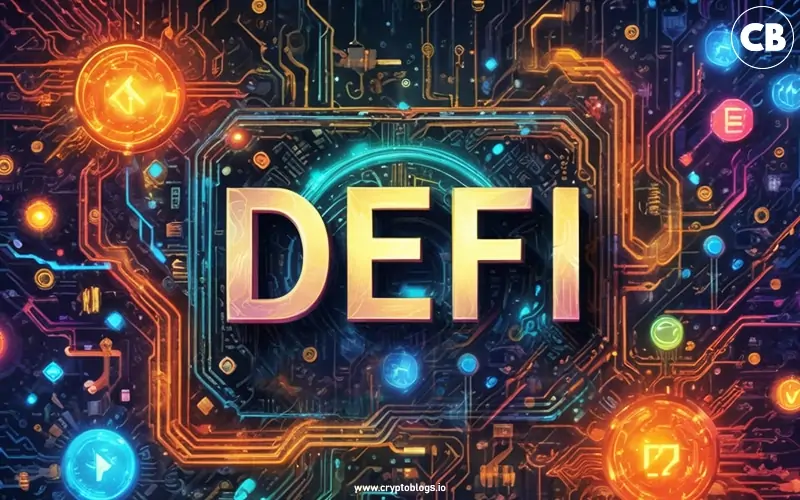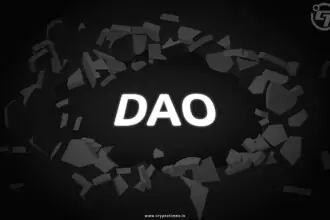The world of finance is experiencing a major transition, fueled by the advent of decentralized finance (DeFi) protocols that cross boundaries between regions and challenge existing banking systems.
At the heart of this change are the top 11 ground-breaking DeFi protocols, each with novel solutions that are transforming how we communicate about money, lending, borrowing, and investing.
These top DeFi protocols are democratizing access to financial services by leveraging blockchain technology and smart contracts, giving individuals throughout the world unparalleled control, transparency, and inclusiveness.
These revolutionary technologies have a wide range of possible uses, including decentralized exchanges, lending systems, stablecoins, and yield farming.
This extensive investigation digs into the cutting-edge breakthroughs that power each of these 11 game-changing DeFi protocols. We’ll look at the groundbreaking ideas underpinning their operation, examine their distinct value offerings, and consider their enormous influence on the global financial scene.
Whether you’re an experienced investor, an inexperienced beginner to the realm of DeFi, or simply interested in what’s possible with blockchain technology, this essay guarantees to be eye-opening.
Prepare to be educated on the limitless possibilities these top DeFi protocols reveal. They defy long-held rules and are moving the finance industry towards a future where borders are outdated.
Let’s crack on!
What is Decentralized Finance (DeFi)?
Decentralized Finance (DeFi) is a term for financial services on public blockchains, primarily Ethereum. The platform allows users to earn interest, borrow, lend, buy insurance, trade derivatives, trade assets, and much more without a third party.
DeFi leverages Bitcoin’s power to create a fair, free, and open-to-all market accessible to all users with an internet connection.
Now that you know what DeFi is, let’s look at 11 DeFi protocols you can consider if you want to trade, lend, borrow, or invest.
Top 11 DeFi Protocols in 2024
In 2024, the DeFi landscape is dominated by innovative protocols such as Uniswap, Compound, and Aave, offering decentralized lending, borrowing, and trading solutions. With an emphasis on transparency and accessibility, these platforms are reshaping the financial industry by empowering users worldwide with unprecedented financial autonomy and opportunities for growth.
Lido
DeFi Protocol, Lido has established itself as a pioneering force in decentralized liquid staking, with a total value locked (TVL) of more than $27.31 billion.
While originally concentrating on Ethereum, Lido has since broadened its staking capabilities to include MATIC and SOL, giving customers a variety of options. Nevertheless, as of the start of 2023, Lido no longer allows staking for Polkadot or Kusama.
Lido simplifies the staking procedure for the coins it supports. As a user, you can choose your favorite cryptocurrency, link it to your wallet, and set your preferred staking amount.
When they stake, they obtain tokens indicating their staked possessions, such as stETH, stMATIC, or stSTOL, based on the cryptocurrency.
These tokens are incredibly adaptable and can be used with a variety of DeFi protocols. Whether users want to supply liquidity, utilize it as collateral for loans, or deposit it to earn yields, Lido enables them to maximize the rewards of non-custodial staking while retaining liquidity.
This novel strategy has cemented Lido’s status as a pioneer in the decentralized liquid staking market.
AAVE
AAVE is an open-source DeFi protocol & this revolutionary platform, with a TVL of $8.1 billion, allows investors to lend and borrow cryptocurrency without the use of centralized middlemen, promoting true financial liberty.
Aave supports a varied selection of cryptocurrencies, including stablecoins and altcoins, offering customers plenty of options. Borrowers can leverage these assets at competitive fixed or variable interest rates, whereas lenders may add to liquidity pools and receive interest on deposits, generating new revenue streams.
Particularly, Aave provides exceptional flexibility, allowing borrowers to seamlessly choose between variable and fixed interest rates, guaranteeing they receive the best conditions at all times.
At the heart of Aave’s ecosystem is its native AAVE token, formerly known as LEND, which plays an important role in governance and can be staked for fees and incentives.
Uniswap
Uniswap Labs invented the Uniswap protocol, a pioneering peer-to-peer system revolutionizing crypto token trading across several blockchains, with a major focus on Ethereum and a TVL of $5.89 billion.
One of the most appealing aspects of Uniswap is its unrivaled asset variety, which is made possible by an almost minimal coin listing cost.
This open strategy enables the easy listing of any ERC-20 coin, each with its own unique smart contract and liquidity pool.
Uniswap’s novel liquidity provision approach asks users to deposit equal quantities of both coins to a pool. For example, in the Ethereum/Dai pool, users have to lend both Ethereum and Dai.
In exchange, Uniswap rewards these liquidity providers with a portion of the transaction costs from that pool, resulting in an incentivized ecosystem.
Marker Dao
MakerDAO, a groundbreaking decentralized autonomous organization (DAO) that runs the Maker platform, is at the vanguard of decentralized finance (DeFi).
With a TVL of $5.41 billion, this unique technology allows users to create Dai stablecoins by collateralizing acceptable assets defined by the Maker governance community.
Dai is soft-pegged to the US dollar, making it a stable cryptocurrency for making loans and remittances and protecting against instability.
Dai can be obtained through centralized and decentralized exchanges and generated by opening a Maker Collateral Vault. These storage facilities, smart contracts that run on the Ethereum blockchain, keep collateral in escrow until the loaned Dai is returned.
MakerDAO’s versatility enables users to collateralize a variety of Ethereum-based assets authorised by MKR holders.
Once purchased, Dai effortlessly fits into the thriving DeFi ecosystem, playing an important role in lending, borrowing, and yield farming processes.
Furthermore, its stability makes it an appealing asset for the emerging blockchain-based gaming and collectibles sectors, demonstrating MakerDAO’s significant role in defining the future of decentralized finance.
Rocket Pool
Among the wide staking landscape, Rocket Pool distinguishes itself as a decentralized and non-custodial liquid staking solution designed specifically for Ethereum.
Although its small appearance makes it appealing to people seeking freedom and access to Ethereum staking, it is free of restraints such as large minimum deposits or liquidity limitations.
Rocket Pool’s dependability is demonstrated by its staking volume, which exceeds an astonishing 800,000 ETH and is supported by a strong network of over 3,000 node operators.
The platform offers two alternative staking options: a node operating option that requires only 16 ETH and is incentivized with additional RPL tokens and a liquid staking solution with a nominal 0.01 ETH requirement that grants users rETH tokens for DeFi integration.
Summer.fi
Summer.fi (previously Oasis.app) emerged from the founding MakerDAO ecosystem in 2016 and has since grown into the leading DeFi protocols, providing a comprehensive suite of investment alternatives.
Summer.fi, no longer affiliated with MakerDAO, continues offering investors a front-end access point to the famed Maker protocol.
Summer.fi’s diversified product offerings support a variety of investment strategies. The “multiply” functionality allows for increased exposure to a wide range of cryptocurrency assets, whereas “borrow” allows users to acquire loans against their current holdings.
Furthermore, the “earn” option opens up long-term yield-creation opportunities with automated strategies customized to different risk tolerances.
JustLend
JustLend, a revolutionary lending technology on the Tron network, is paving the way for decentralized finance (DeFi). It allows users to lend or borrow cryptocurrency beyond the limits of existing centralized institutions.
This revolutionary platform supports a wide range of assets, including established stablecoins such as USDT, TRC-20 tokens, and the native TRON cryptocurrency.
JustLend’s adaptable design enables borrowers to get loans at floating or fixed interest rates, depending on their requirements. On the other hand, lenders can contribute their cryptocurrency to liquidity pools, collecting interest and opening fresh sources of income.
The platform additionally incentivizes involvement by allowing users to stake USDT and get consistent returns.
Curve Finance
Curve, guided by decentralization principles, appears as a revolutionary protocol for low-fee, low-slippage stablecoin exchanges.
Curve is based on smart contracts and uses liquidity pools similar to Uniswap, allowing for frictionless swaps between stablecoins such as DAI and USDC. To maintain this efficient ecology, Curve incentivizes liquidity provision with attractive benefits.
Every deal conducted on Curve generates a percentage of the swap costs, which are evenly dispersed across all liquidity providers.
Trade volume serves as a stimulus for higher returns. Furthermore, Curve’s liquidity pools work smoothly with protocols such as Compound, enabling providers to earn interest in alongside trading fees.
Compound Finance
Compound Finance, sometimes known as Compound, is a trailblazing decentralized finance (DeFi) lending protocol that was first developed for the Ethereum network but is now growing to accommodate additional networks.
This breakthrough technology has transformed how people engage with financial assets by allowing peer-to-peer lending and cryptocurrency borrowing without traditional intermediaries.
At the heart of Compound’s ecosystem are a varied range of digital assets, namely stablecoins and altcoins, which are made available via its liquidity pools.
Lenders put their assets into these pools, receiving interest over time determined by the demand for those assets. Customers, on the other hand, may obtain loans through offering collateral, and the protocol will dynamically alter interest rates in accordance with supply and demand dynamics.
Convex Finance
Founded in 2021, Convex Finance emerges as a unique decentralized finance (DeFi) solution optimized for the Ethereum network, with developments to Polygon and Arbitrum.
Its mission is to increase compensation for liquidity providers on the famous Curve Finance infrastructure by functioning as an optimizer, optimising yields for customers locking up their assets.
Convex Finance’s distinctive advantage lies in its ability to simplify the steps of claiming and compounding CRV rewards. Users may put in Curve LP tokens and get Convex LP tokens, which reflect their investment in the pool. This automated strategy could provide larger profits than direct staking on Curve Finance.
Convex Finance’s native CVX cryptocurrency serves a dual purpose. Firstly, it lets holders to engage in protocol governance, defining the platform’s future path through voting.
Secondly, by staking CVX or actively participating with the Convex platform, users unlock possibilities to earn extra CVX tokens, thus rewarding involvement and alignment with the protocol’s success.
Venus Protocol
Venus Protocol is a pioneering decentralized lending and borrowing platform based on the BNB Chain. It allows users to lend, borrow, and earn interest on a variety of cryptocurrencies, such as Bitcoin, Ethereum, and stablecoins.
At its heart is a system of liquidity pools in which users give assets to generate a return or borrow by providing collateral.
The protocol is regulated by its native XVS token, which gives holders governance rights and makes transactions easier. Venus Protocol’s smart contracts enable transparency, security, and decentralization, removing mediators and giving users authority over their cash.
Venus Protocol intends to democratize financial services by utilizing blockchain technology, creating a global, accessible environment for lending, borrowing, and earning attractive rates on digital assets, thereby promoting the expansion of decentralized finance.
Conclusion
In the rapidly evolving landscape of decentralized finance, Venus Protocol stands as a beacon of innovation, disrupting traditional lending and borrowing models.
By harnessing the power of blockchain technology and smart contracts, it has created a transparent, secure, and globally accessible ecosystem that empowers individuals to take control of their financial futures.
As the DeFi movement continues to gain momentum, platforms like Venus Protocol will play a pivotal role in democratizing financial services, breaking down barriers, and fostering inclusivity.
With its community-driven approach, diverse asset support, and commitment to decentralization, Venus Protocol is poised to shape the future of lending, borrowing, and yield generation, paving the way for a more equitable and open financial landscape.







